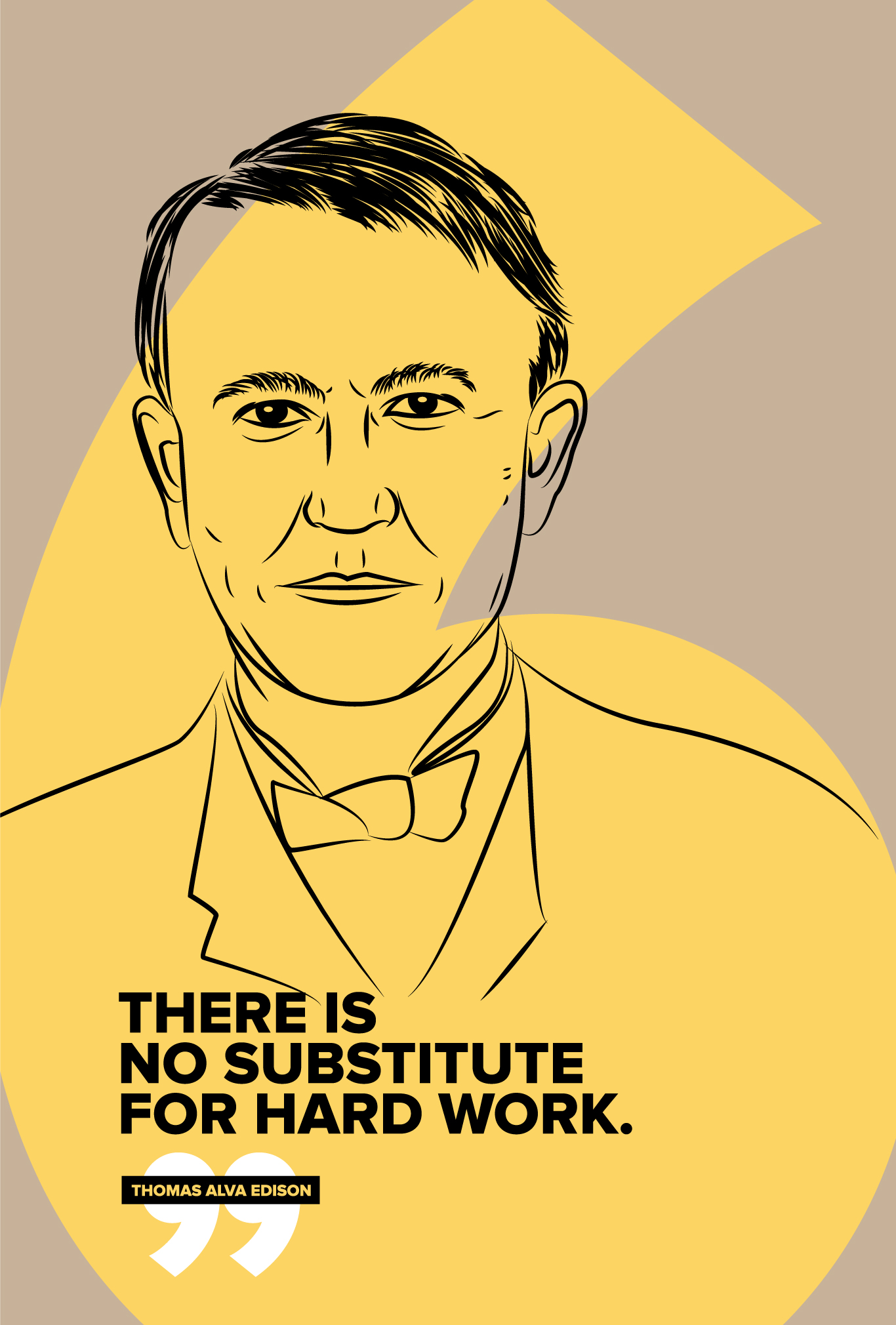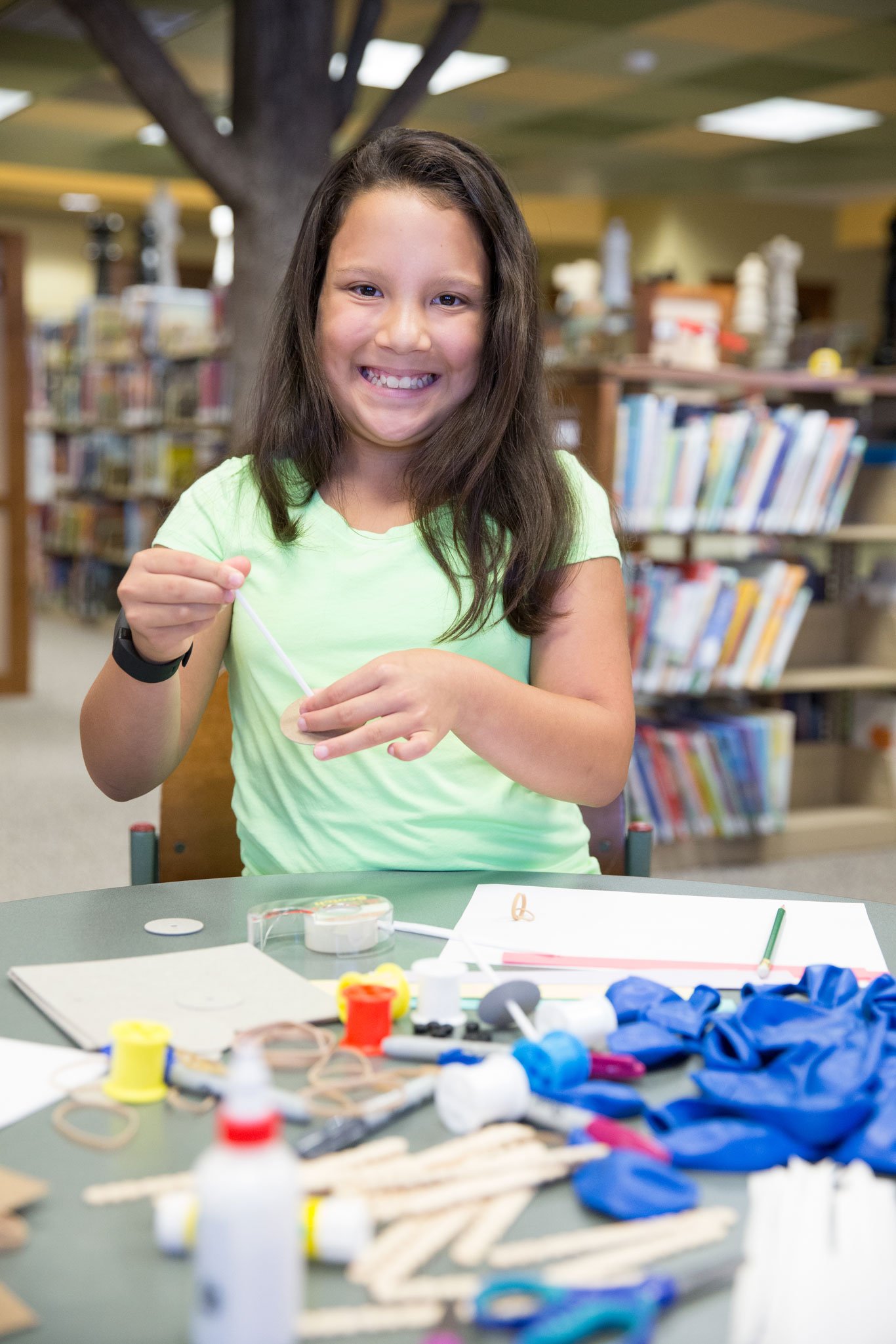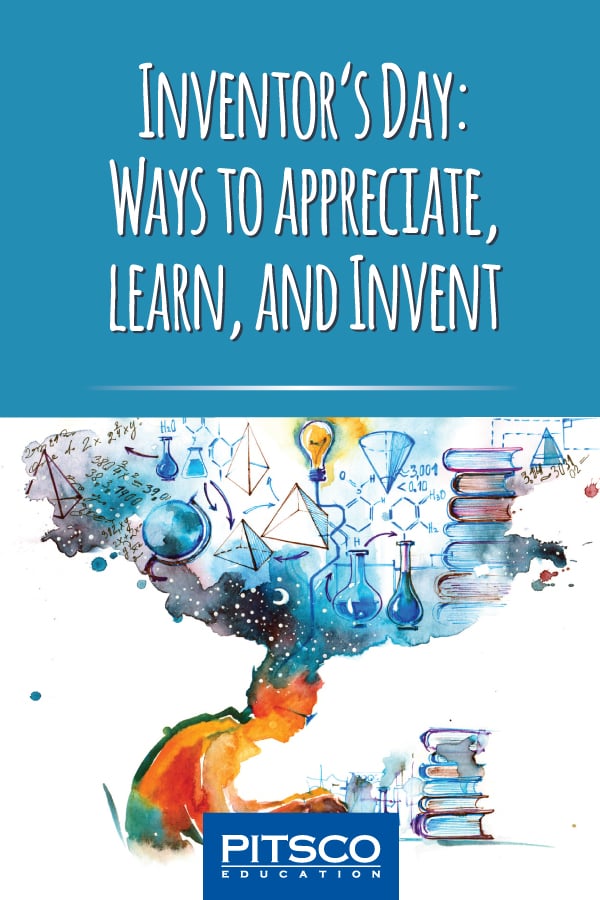Updated 6/17/24
Inventors are the coolest. Sometimes they are elevated to celebrity status and other times they’re hidden figures in history. Either way, for many, their impact is enduring.We’re surrounded by products, processes, and inventions that started as an idea – usually an attempt to solve a problem – and ended up as something that makes our lives better in one way or another.
I know we’re all very thankful for Thomas Edison (the light bulb and 1,000 other patents!), Henry Ford (the Model T and the assembly line), and the Wright Brothers (first successful airplane). And where would we be without the Internet (Nikola Tesla speculated a worldwide network very early on, MIT’s J.C.R. Licklider popularized the idea of a computer network, but it was Robert Kahn and Vinton Cerf who created an Internet precursor in the 1960s)?
 That said, I think we’re all also grateful for the person who invented the toothbrush (William Addis), the modern pencil with eraser (Hymen Lipman), the modern coffee brewing method (Melitta Bentz), the dishwasher (Josephine Cochrane), windshield wipers (Mary Anderson), and toilet paper rolls (Seth Wheeler). If you’re from Kansas, this time of year, you’re generally especially thankful for James Naismith who invented the game of basketball and its first rule book and founded the University of Kansas’ basketball program. And, me, well, I’m personally also thankful for Ruth Wakefield who invented the chocolate chip (and subsequently the chocolate chip cookie).
That said, I think we’re all also grateful for the person who invented the toothbrush (William Addis), the modern pencil with eraser (Hymen Lipman), the modern coffee brewing method (Melitta Bentz), the dishwasher (Josephine Cochrane), windshield wipers (Mary Anderson), and toilet paper rolls (Seth Wheeler). If you’re from Kansas, this time of year, you’re generally especially thankful for James Naismith who invented the game of basketball and its first rule book and founded the University of Kansas’ basketball program. And, me, well, I’m personally also thankful for Ruth Wakefield who invented the chocolate chip (and subsequently the chocolate chip cookie).
So, let’s celebrate the act of inventing and inventors! The first National Inventors’ Day was proclaimed in 1983 by President Ronald Reagan. It occurs every year on Thomas Edison’s birthday, February 11. It’s been designated as a day to recognize the new products, processes, and procedures inventors have contributed to our world, and it can be used to celebrate the creative genius in all of us.

Ways to Celebrate National Inventors Day with Your Class
- Brainstorm the profile of an inventor. In small or large groups, have students generate characteristics that inventors often share (such as willingness to fail, persistence, creativity, resourcefulness, handiness, communication, collaboration, and awareness) and ideas on how to practice them. Additionally, have students identify times they’ve exhibited those characteristics and which ones they see in their classmates.
- Challenge students to invent! Identify an issue in the school or community. Brainstorm and then design a possible solution; our Arduino Education kits, TETRIX Robotics building systems, and our assortment of makerspace supplies make a great starting point. Test the invention. Document and present it to the class.
- Explore what it takes to patent something through the United States Patent and Trademark Office.
- Invite local makers or inventors to the class to share their experiences.
- Poke around on the National Inventors Hall of Fame® site, especially their blog. They’ve got some cool ideas and activities like these Valentine resources. And, if you’re local to the greater D.C. area, can we say field trip?!
- Host an inventors’ wax museum. Have students select, research, and then portray the inventors (local or famous, their choice!). Have other classes or even family come visit the museum.
- Take a look at our catalogs for inspiration. Explore all kinds of raw materials, assorted supplies, ready-made kits, activities, solutions, and furniture. We’re ready to help you and your students make their mark!

Encourage Failure
Inventors need a healthy dose of patience – with themselves, the product, and the process – along with a willingness to fail. Thomas Edison is credited with saying, “I have not failed. I’ve just found 10,000 ways that won’t work.” The future, including the future workforce, is full of uncertainties that today’s students will have to navigate. They should learn now that failure is simply one step in the process of finding a solution.
Encouraging students to fail gives them permission to try again and again until they reach the final product. And if they never reach that final product, just remind them that some of the inventions we take for granted today are actually the results of failure, such as Bubble Wrap. For inspiration, check out 8 Successful Products That Only Exist Because of Failure. Overcoming failure leads to a sense of accomplishment that can help build a strong foundation for future success, so encourage failure as part of the creative process.
Girl Power Changed Our Lives: Female Inventors
Also, as declared by the UN, February 11 is the International Day of Women and Girls in Science. Coincidence? No way! Women have largely contributed to society with some incredible inventions. We named a few above but there are so many more. We love these:
- A Mighty Girl’s Sisters in Innovation: 20 Women Inventors You Should Know, which includes the likes of Grace Hopper, programming pioneer, and Hedy Lamarr, who helped create the tech that led to today’s GPS, Bluetooth, and Wi-Fi.
- USA Today’s Who invented the dishwasher, windshield wiper, caller ID? Women created these 50 inventions, which highlights Florence Parpart’s electric refrigerator and street sweeper, Ida Forbes’s electric hot water heater, and Marie Van Brittan Brown’s home security system.
There are SOOOO many we could list and we’re already feeling inspired! Serious girl power changed life as we know it.
Show ‘em Off!
You’re gathering the inspiration. Make sure you show off those student inventions. Inventors need a way to showcase their creations and explain their thought process. School fairs, after-school events, and community presentations give students a stage on which to present and help them hone their oral and presentation skills.
Have you considered recording their presentations? How about posting the videos on your schools socials, or creating a classroom YouTube channel?
But you don’t have to stop there. There are plenty of competitions – some with big prizes – for young inventors to enter. For starters, check out the Connecticut Invention Convention, and the Regeneron International Science and Engineering Fair.
STEM for ALL
We believe in STEM for ALL. We’re working to support educators and schools with helping girls find and keep interest in STEM subjects and fields. We truly believe if you can see it, you can be it, and we’re on a mission to help make that happen. If you’ve not had a chance to explore Code Cube™ give it a look.
What will you do to celebrate ingenuity and create some new inventors? Post comments to share your experiences and inspire other educators.
MORE RESOURCES:



 That said, I think we’re all also grateful for the person who invented the toothbrush (William Addis), the modern pencil with eraser (Hymen Lipman), the modern coffee brewing method (Melitta Bentz), the dishwasher (Josephine Cochrane), windshield wipers (Mary Anderson), and toilet paper rolls (Seth Wheeler). If you’re from Kansas, this time of year, you’re generally especially thankful for James Naismith who invented the game of basketball and its first rule book and founded the University of Kansas’ basketball program. And, me, well, I’m personally also thankful for Ruth Wakefield who invented the chocolate chip (and subsequently the chocolate chip cookie).
That said, I think we’re all also grateful for the person who invented the toothbrush (William Addis), the modern pencil with eraser (Hymen Lipman), the modern coffee brewing method (Melitta Bentz), the dishwasher (Josephine Cochrane), windshield wipers (Mary Anderson), and toilet paper rolls (Seth Wheeler). If you’re from Kansas, this time of year, you’re generally especially thankful for James Naismith who invented the game of basketball and its first rule book and founded the University of Kansas’ basketball program. And, me, well, I’m personally also thankful for Ruth Wakefield who invented the chocolate chip (and subsequently the chocolate chip cookie). 



